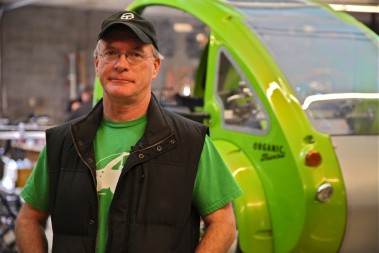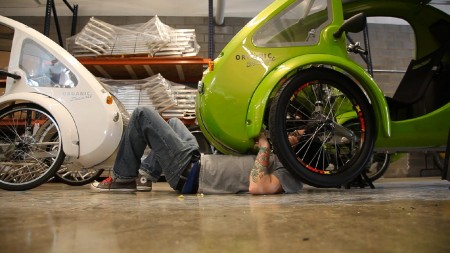Picture a vehicle that would look equally at home on The Flintstones and The Jetsons and you’ll have a pretty good idea of the ELF’s unique design.

The ELF is a semi-enclosed tricycle with a roof, trunk, and enough room for eight bags of groceries. And while it doesn’t require a license plate, the bike-lane-legal electric- and human-powered ELF is capable of cruising up to 30 miles per hour, thanks to its onboard rechargeable battery.
In 2012 Rob Cotter and a group of mechanics, bike builders, and engineers started Organic Transit, a Durham, North Carolina, company dedicated to manufacturing highly efficient tricycles.

One element that separates the ELF from other electric-assist bikes is its protective aerodynamic shell. And it’s that outer shell that qualifies the ELF as a “velomobile,” a class of vehicle that comes in many shapes and sizes, including some of the most efficient vehicles on the road. Most velos, as they are known, are enclosed recumbent tricycles that generate incredible efficiency, thanks to their sleek design. From his work with the International Human Powered Vehicle Association Cotter knew it was possible to design a velo that could travel at speeds that would tempt people to ditch their cars for an ELF.
According to Cotter, “Many types of technology come together and merge to fill this technological space between a bicycle and a car.”Some of the ELF’s futuristic features include its continuously variable transmission (CVT), which consists of two chains that coast independently, eliminating any friction when switching between pedal power and the 600-watt backup battery.
